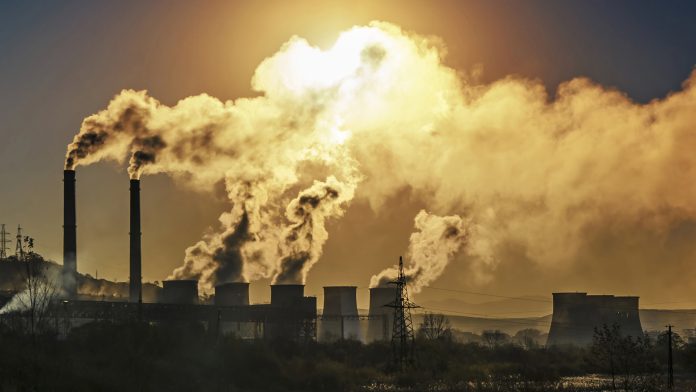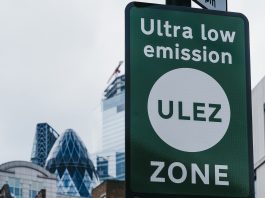Dr Gonzalo Castro de la Mata, Executive Director of the Earthna Centre for a Sustainable Future (Qatar Foundation), explains that innovation and entrepreneurship are essential for tackling the global environmental crisis.
Concerns about the health of the planet are increasing exponentially. Alarming news appears every day showing the gravity of the situation, including the imminence of global warming, the accelerating loss of biodiversity, and the growing levels of contamination of various ecosystems, including the oceans.
These impacts, a result of human society’s unsustainable activities upon our planet, are so profound that scientists consider that a new and distinct geological era, defined by our impacts upon the planet, has arrived. They have named it ‘The Anthropocene.’
Are these changes so profound that their harmful impacts upon human societies, natural ecosystems, and the planet at large, are inevitable? Will global warming change the balance of ecosystems beyond irreversible tipping points? Is Gaia, our mother Earth, inexorably injured and doomed? Is human civilisation and thus our own species, in danger of extinction?
The answers to these questions depend on the decisions we make today. Solutions are possible if these decisions are rational, informed by science, and based on technology, innovation, and entrepreneurship.
Humans today have the highest standards of living
The starting point is to understand that although on average, global environmental trends have deteriorated, humans today enjoy the highest standards of living at any point in our history, everywhere.
Literacy rates have increased from 10% to 90% globally since the year 1800; life expectancy has more than doubled in every continent in the last 100 years; and the percentage of people living in extreme poverty has plunged from 38% in 1980 to 10% today.1
These achievements are the result of human progress, ingenuity, economic growth, and entrepreneurship. Moving back the clock is both not possible but also immoral.
The challenge is thus to address the global environmental crisis without slowing economic growth, in the same way as we have been able to solve previous environmental crises.
Examples of solving environmental problems with innovation and entrepreneurship
A few decades ago, the principal environmental problems making the news were the alarming disappearance of the ozone layer, and widespread acid rain, both caused by the release of pollutants into the air and atmosphere from industrial activity. Both problems were solved.

In the case of acid rain, by the introduction of market-based mechanisms based on tradeable emission permits, a precursor of today’s carbon markets. In the case of ozone depletion, through international co-operation in the form of the Montreal Protocol that limited the use of chlorofluorocarbons, the main cause of its disappearance.
For all practical purposes, both problems have been solved through technology, innovation, entrepreneurship, markets, and co-operation.
Restoring ecosystems and protecting biodiversity
Our ability to solve problems, however, does not end there. Today, rivers no longer burst in flames, and water and air quality in developed economies are much better than they were 50 years ago.
Thanks to growing environmental awareness, the percentage of protected lands globally has increased from less than 5% in 1980 to 20% today. Forests that were cleared for agriculture are rapidly returning in many countries due to agricultural intensification that reduces pressure upon natural ecosystems.
Forest coverage in Europe shows a net increase of 4% since 1990, with France representing the most dramatic example: forests now cover 32% of the country, compared with 13% in 1870.
Regarding biodiversity, numerous species have been brought back from the brink of extinction and others have been reintroduced back to their native habitats.
The most stunning example is the reintroduction of the Grey Wolf in Yellowstone National Park, where the re-establishment of this top predator two decades ago has enhanced the ecosystem in ways that were not even imagined.
These success stories, however, do not imply that we are out of the woods, as there is much more that needs to be done to properly address the biodiversity crisis, but they show that if we set our minds to doing it, we have the capacity to restore ecosystems and protect biodiversity.
What are the impacts of global warming?
Is it too late to similarly address the elephant in the room, global warming? Certainly, the task at hand is overwhelming. According to the World Meteorological Organization, 2023 will be recorded as the warmest year in recorded history, and the consequences have been dramatic: fires everywhere, floods, and droughts that have caused human displacement, immense economic losses, and huge suffering.

The scientific consensus is that unless we can keep global warming below 1.5°C by 2050, the central goal of the Paris Agreement, the impacts of warming will intensify, and we could enter a scenario of unprecedented and irreversible changes to the ability of the planet to support life as we know it.
Unfortunately, the release of greenhouse gases in the atmosphere has already increased the average global temperature by ca. 1.2°C. Here is where the challenge becomes daunting: current global pledges to reduce emissions under Paris put us on a trajectory to exceed 2.7°C by 2050.
It becomes imperative to accelerate the reduction of emissions to reach the 1.5 promised land. Paraphrasing the well-known financial axiom that “past performance is no guarantee of future results,” the grim reality is that the global economy continues to rely primarily on fossil fuels, the main source of emissions, and that this dependence has not changed significantly over the last several decades.
The percentage of primary energy derived from fossil fuels globally has decreased from 88% in 1985 to 82% today, a decrease of only 6% percentage points in almost 40 years. Is it realistic to go down to zero in the next 27 years, as required to reach the 1.5 target? Despite the accelerated deployment of renewable energy, the short answer is that it is not possible unless we do something different. Ignoring this reality is irrational.
Technological innovation and entrepreneurship are necessary to solve the environmental crisis
This is where technological innovation and entrepreneurship come into place.
There are several promising avenues for decarbonisation that can ‘bend’ the shape of the 2.7-degree curve and allow us to avoid catastrophic global warming.
Most of these technologies already exist but some are still in their infancy and thus too expensive to be commercially viable under current circumstances. But these are solutions within reach.

Among others, promising avenues include carbon capture and storage in its various forms, deploying hydrogen as a storage and transport fuel, especially when derived from renewable sources or in ways that carbon emissions are reduced or captured (e.g., blue carbon produced with natural gas), and direct capture of carbon dioxide from the atmosphere.
All these technologies can complement the rapid increase in renewable sources already achieved through photovoltaics and wind.
In parallel, renewed efforts to enhance energy efficiency are also required and, in most cases, represent ‘win-win’ solutions through better building insulation, among other options.
If these solutions are within reach, why are they not being deployed at sufficient scale? The answer is that they need to be accelerated through policies that reward innovation through incentives and by placing a price on carbon emissions.
The colossal power of market forces, coupled with economic incentives, will provide the growing medium for these efforts to flourish on their own.
Solutions will find the problems they are meant to solve. The billionaires of tomorrow will be the decarbonisers of the global economy today.
References
All statistics from “Our World in Data”: https://ourworldindata.org/









